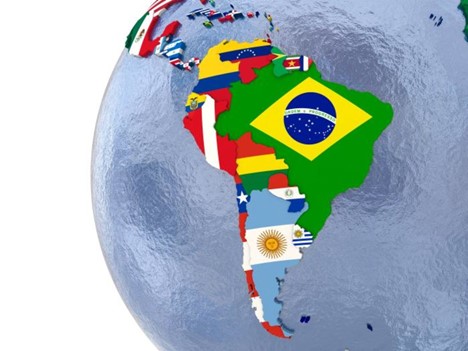Latin America (Latam) is a geographic economy often overlooked by Europe and the US. Nevertheless, in recent years, the region has made some fast advancements in the area of digital transformation. Where once oil and mining behemoths took the highest valuations, the region is quicky catching up with high growth businesses. In the last 3 years the region has seen 17 unicorns raise from conception, and the most valuable company is a digital e-commerce platform: Mercadolibre.

According to LAVCA (Latin American Venture Capital Association), VC investments have nearly doubled annually in the region. With investments made in reputable companies such as Nubank, Loft and Wildlife, widely known global VC funds such as sequoia and Andreessen Horowitz have started to leave their staple in the region.
We should not forget that the region counts with a population double of that of the US and half the GDP of china. Moreover, there is widespread amount of economic inequality, where the wealthy in cities such as Mexico City and Rio de Janeiro are living to standards of cities such as London or Paris, the poor battle with issues such as hunger, housing shortage etc. This creates an ecosystem with a lot of opportunities and allows for the attraction of capital and talent.
Indeed, Uber recorded that brazil is their largest market on a global level for volume of ride, with São Paulo recording the highest traffic on the app. Moreover, Rappi, a widely spread (among other things) delivery app with Colombian origin saw its sales grow by 113% over the first five months of the corona crisis.
Even though it might seem, that at a meagre 2.2% of national GDP, the technology company market cap provides a minimal disruption, an average 65% yearly growth from 2003 shows the potential of the industry. This should be compared taking into consideration the 11% annual growth of the US or the 40% growth of China.

What factors contribute to this growth? Well, a large survey of Brazilian students shows the population has large interest in contributing to the sector. That is, by working for large techs or start-ups or with the initiative of starting their own company. Besides that, a steady growth in VC investments across the region make for more growth opportunities. Third, the socio-economic status allows for a lot of innovations, with a population that is open for disruption and digital technologies.
Across the Latin American region a lot of investments have been made on a governmental level for incubators and accelerators to increase entrepreneurial activity in the region. And it has, without doubt, brought its results with cities like São Paulo, Medellín, Buenos Aires and Mexico City becoming important tech hubs with strong start-up and investment activity. VC investments continue to steadily rise, with a 100% increase in the last year to $4.6 billion. But, even though investments in starting stages and end stages of ventures have great opportunities in funding, NGO Endeavor has highlighted the need for more investments on a scale-up level. In order to make sure that the companies are able to make the shift from SME/Scale-up to established multination/multibillion corporations. Clearly some cities such as São Paulo have already developed a strong ecosystem with a large eco-system in the areas of Fintech, Housing and insurtech. Yet other cities across the region such as Santiago de Chile and Lima are still struggling to get more capital and movement in their local eco-systems in order to be the driver of change.
An interesting case study is the article from Mariana Palau in the financial times. In order to battle the effects of COVID-19, Colombia has seen an opportunity to make a shift in its economy, moving away from traditional industries with a large ecological footprint such as mining and petroleum. Instead, the country is aiming to make significant investments in the areas of renewable energies, restoration investments in conflict-hit areas from its turbulent past, and last, digital transformation. With initiatives such as a national 4G coverage, digital court files and electronic medical records, the country plans to digitize a widespread of industries in order to assure effectiveness and creating new industries.
Sources:
https://www.ft.com/content/6ff1545a-d9aa-4bde-af1e-65ba2107e5c4
Latin America’s digital transformation is making up for lost time

